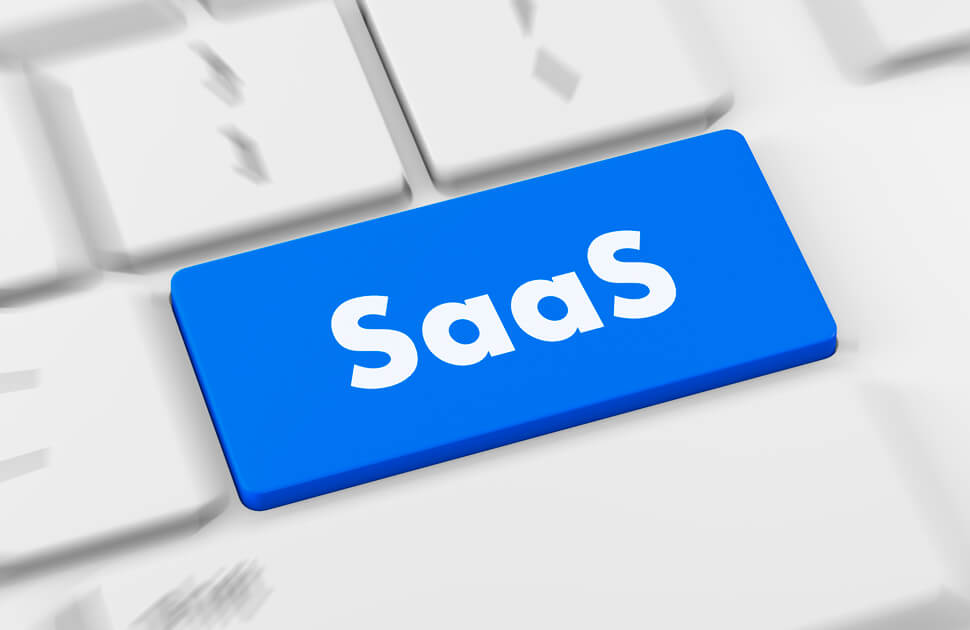Software as a service (SaaS) is becoming an increasingly viable option for organizations seeking the accessibility and versatility of software solutions and data analysis tools without the need to rely on installation and execution of applications in their own computer systems and data centers.
SaaS is taking control of the cloud computing market. In fact, according to IDC, SaaS will account for approximately 60% of public spending on the cloud by 2020. In addition, 73% of organizations declare that almost all their applications will be SaaS by 2020.
SaaS is a software distribution model that offers a lot of agility and profitability for companies, making it a reliable option for numerous business models and industries. It is also popular among companies for its simplicity and user accessibility, security and the wide connectivity that serves to streamline business models, resulting in maximum efficiency in all areas. Nowadays, most companies are implementing various business intelligence strategies, using SaaS tools.
The 6 Key SaaS Trends For 2019
1) Artificial Intelligence
Artificial Intelligence (AI) technologies are becoming widespread. 81% of IT leaders are already working on the development of artificial intelligence systems. AI optimizes business processes, increases productivity and efficiency while automating repetitive tasks and supports human capabilities.
When SaaS is combined with AI capabilities, it allows companies to get better value from their data, automate and customize services, improve security and complement human capacity. How will AI improve SaaS in 2019?
- Automation: machine learning, a subset of AI, is used in SaaS to automate responsiveness in reports and customer service applications, such as AI-driven chat operations with live chat bots.
- Personalization: the software is easier to use with technologies such as natural language processing (NLP), which automatically processes human speech patterns and voice control. This can be implemented in the customer service functionality to improve personalization and better meet the needs of users.
- Speed: SaaS enabled for AI speeds up internal processes and operations, allowing companies to get quick answers to their questions, make quick forecasts and accelerate their overall level of responsiveness.
- Security: due to the automation enabled by the AI, and the ability of machine learning to recognize patterns, SaaS security is enhanced by the rapid identification and solution of possible threats with automatic recovery incorporated.
2) Vertical SaaS
While horizontal SaaS focuses on customers from any industry and industry, vertical SaaS is fully customizable, targeting customers within specific industries and supply chains. Some examples are BI software for health, retail analysis software or modern logistics analysis. Companies seeking to benefit from specialization find that vertical SaaS is a profitable and industry-specific option that allows them to customize certain features.
Why Will Vertical SaaS Trends Have Such A Big Impact In 2019?
The vertical SaaS providers also have the ability to adapt the features according to the client’s demand and industry, and effectively address their needs within their niche. This results in greater flexibility, more sales opportunities, and lower acquisition costs.
3) The growing need for API connections
More and more SaaS providers tend to provide greater integration capabilities instead of redirecting their clients to third parties. If an organization wants to invest in the services of a cloud solution provider, the following questions should be asked to ensure seamless integration:
- What capabilities does the provider offer to integrate SaaS into the existing business system?
- Can this provider also integrate the legacy systems used?
- Is the data protected while the integration process is being carried out?
4) Increased thinking leadership
As the landscape becomes competitive with more SaaS startups competing for the attention of smart companies, there will be many more SaaS resources available in the form of videos, interactive applications, blog content, e-books and white papers. In turn, this will make software as a service more accessible while offering companies a large amount of new information about the industry.
5) Migration To PaaS
As software as a service industry evolves and innovation increases, many developers or suppliers will focus on customer retention in addition to customer acquisition.
In 2019, a trend of migration from SaaS to PaaS (platform as a service) is expected, to allow companies to create customized applications as complements to their original services that will improve the agility of companies in general; will facilitate the scalability of the organization more easily using a platform as a service; and will provide automatic updates on a regular basis.
6) Micro-SaaS
In 2019 and later years, SaaS companies will have to find new ways to innovate, offer value, and connect with new perspectives. Typically, micro-SaaS companies are run by a small team, sometimes even by one or two people. Micro-SaaS products are often complementary to existing platforms or developments, created with the aim of improving a nonexistent feature or improving an existing SaaS product.
In conclusion, as data continues to be the driving force behind smart business strategies in a digitally dependent world, SaaS options will be an increasingly convenient and affordable option in all industries, both now and in the years to come.
 Subscribe
Subscribe
 Ask for a demo
Ask for a demo

 4 min
4 min
